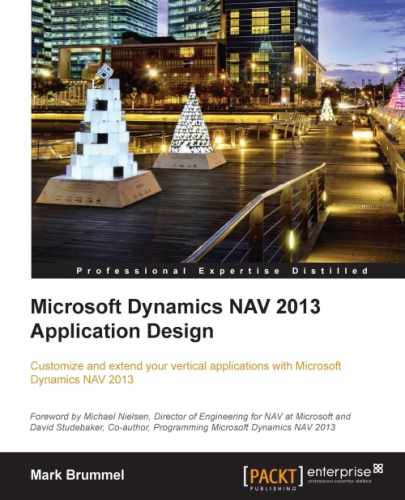In this chapter, we will learn how Microsoft Dynamics NAV fits a consultancy company. Most consultancy companies have project-related processes. They take on larger projects that take a certain time to complete. Some consultancy companies also purchase and sell items.
For the projects, the consultancy company needs to keep track of used resources and items. Sometimes they can invoice the resource hours they spend one-on-one but most of the time they will also take a risk in doing fixed price projects. In this case, it is even more important to know if the project was budgeted well and ensure money is not lost on the way.
There are many types of companies working this way. Examples are accountancy firms and lawyers, but also many companies in the construction business work like this.
For this chapter, we will use an example, a company we are all very familiar with, either because of working as an employee, a customer, or maybe even an owner. We will look at the business process of a Microsoft Dynamics NAV Partner.
The partner in our case sells Microsoft Dynamics NAV licenses for new projects. They also help existing customers in upgrades and support. Lastly, they are selling infrastructure solutions, assembling servers, and desktop systems in house.
We will discuss four different project scenarios and see how Microsoft Dynamics NAV can be used to support those. To do this, we will create some modifications along the way. The objects required for this chapter can be downloaded from http://ftp.packtpub.com/chapter8.fob. After reading this chapter, you will have a good understanding of the possibilities and limitations of the Job Module in Microsoft Dynamics NAV, how it fits in with the rest of the product, and how it can be expanded safely.
The two main processes for Microsoft Dynamics NAV partners are implementing new projects and providing services such as supporting and upgrading to existing customers. A third process is selling infrastructure and assembling computer systems but this is an extra service, not the core business.
To support the projects (jobs), the company needs people, software licenses, and hardware. The people (resources) need to be carefully planned on the projects as they are the least flexible part of the company. Hardware (items) and software licenses (G/L Accounts) will be purchased from vendors like Microsoft.
The projects can be divided into large and small projects. The larger projects are new implementations and upgrades. Smaller projects are usually implementing small features and helping users with regular support issues.
Invoicing can be done in various ways. New implementations and small projects can be invoiced per billable hour while upgrades are sold at a fixed price. For hardware, we will use items. Licenses are invoiced directly to the general ledger.
Large projects also have budgets and planning that needs to be maintained. If the budget is fully used and the planning milestones have not been reached, there should be a new budget created in order to complete the project.
To support this process, we will use the Jobs functionality with some customizations. Projects are called Jobs in Microsoft Dynamics NAV so we will use that term from now on.
The registration of the Jobs module can be done using the standard functionality of Microsoft Dynamics NAV as well as the budgeting and planning.
The standard software also allows us to invoice Jobs both fixed price and on time and materials. We can also purchase items for our Jobs. In Microsoft Dynamics NAV 2013, a timesheet module has been added to the application, which we will use and explain in this chapter.
The Jobs module in Microsoft Dynamics NAV is often referenced as a framework that almost always needs some changes. Fortunately, it is designed to be easily changed and we will do so to support our processes.
Although many companies work this way, budgeting for resource groups is not possible. We will create a solution for that. We will also make it possible to see the total number of planned, used, and invoiced hours.
